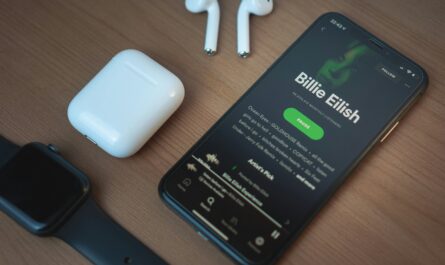By: Jamie Dunn, Montreal Miller, Ben Cooke, and Madison Breuer
In class on Wednesday, we talked about how to actively listen to the consumer, tips to narrow your internet search through keywords and how companies and their public relations team handle crisis situations. We also learned about how to examine and understand customers in their “natural habitats”. This type of research is done by being observant and picking up clues in order to acquire the best data. It is really important companies take note on several factors such as their targets, competitors, issues, external factors, influers ect. This type of information can help different organizations better target their publics. Regarding crisis response, I found it very interesting the different ways companies responded to complaints and issues on their social media accounts. It is apparent that every company has a different approach to crisis response with some being more humorous and others taking a more serious or dry approach. The way a company responds via social media creates a sort of face or personality for the company, which is why it is crucial to respond well. In class we discussed a complaint made to the Amtrak train company in which they did not respond too. In my opinion, that was unprofessional and looked even worse on their company, customer service team and public relations team. I believe that the best way to respond is with a friendly and helpful tone, even if the complaint is silly or invalid. Avoidance and silence only discredits you as an organization. Responding via social media also strengthens the relationship between the company and the consumers as they are creating a voice for themselves and leveling down to the same platform as the consumer. I think that if the company is able to see the Twitter accounts of their direct consumers and potential buyers of their brand, they can get a better idea of the demographic they need to Target. This can be done by viewing what influencers they follow, what hashtags they use and what tweets they favorite As far as live tweeting in class, I really enjoyed the experience. Using a fun social media platform where I can be short, quirky and insert GIFS made an assignment fun. Another element I enjoyed about the live tweeting was that I did not feel pressure to say any certain thing, but it was more natural and spur of the moment. I enjoyed incorporating humor as well as reading everyone else’s funny tweets. – Montreal Miller
In class, we talked about the importance of active listening, the best way to handle a crisis and what to listen for, the influence of listening to customers in their “natural habitat,” and tips for key words to help an internet search. Lots of companies go through a crisis and one of the examples given in class was an NAACP worker was asked to move her seat on an Amtrak train for no reason, so she took matters into her hands and tweeted to Amtrak about the situation and Amtrak never responded to her. In my opinion, not responding at all is worse than giving a response that is questionable. Given the task of live tweeting the lecture, I found myself paying closer attention to the lecture to try and catch the best information to tweet. I had to think on my feet and quickly decipher what would be the best content to share. Along with being alert in class, I felt a lot of pressure to produce conveying, thought-provoking, interesting, relatable, funny tweets. Before I decided to hit the “post” button, I would re-read and ask myself, “Is this good enough for the class to see?” I looked around the room and saw numerous students on the class page and was nervous about their reactions to my tweets. After my first tweet went out, I began to feel more relaxed and comfortable with the exercise. I liked the creative freedom I had to tweet content about serious news with articles attached to it but also comical tweets with relatable GIFs. Before I knew it, class was over and I wanted to keep tweeting and sharing what I had learned. Looking back at my Twitter notifications, many of my followers, not in J480, had been following along the class lecture with my live tweeting. It was rewarding to see how connected we really are and how it was my tweets that made this achievable. – Jamie Dunn
In class on January 22nd, we opened talking about the midterm and what to expect. Active listening was then discussed and its importance. I then tweeted about active listening that was relatively comedic. Then, we got more in depth on active listening and how anybody can collect data. In collecting this data, it comes down to how we interpret it and determine what is actionable. We then talked about the story where the woman was asked to move towards the back of the bus and she said no, little did they know it was a prominent civil rights attorney and she came for them on twitter. I then posted about thinking further than just the business in specific, but think about the lifestyle similar to it and potential influencers. From this, you can find inspiration for future products as well as content ideas. We then talked about the basketball player on the KU team, De Sousa, who lost his cool and threw a chair at another player during a fight. It was fun to tweet during class as it made me really pay close attention compared to other times when I might miss some little thing that has an impact. It was an interesting class overall but I definitely wish there was more engagement on twitter with other classmates. I posted a poll which got more feedback than I expected regarding industries but could have used more. Utilizing a gif in my tweet also found the most engagement and utilized humor. – Madison Breuer
Social media listening and responding is not only an important aspect from a marketing perspective to make informed brand marketing decisions, but also an important aspect to prevent negative PR from gaining traction and temporarily or permanently tarnishing a brand’s image.
Amtrak recognized the importance of this after Sherrilyn Ifill tweeted out about an incident she experienced with the company.
By effectively listening and responding on social media, brands build trust, confidence and influence that are key factors for brand loyalty.
Always promoted its social media listening through a campaign where it developed products specifically designed to address the feedback it had received online. – Ben Cooke
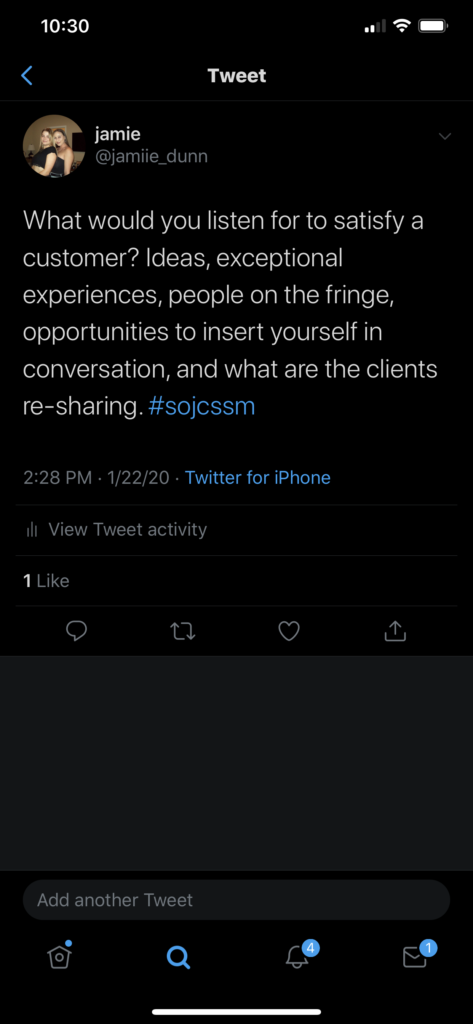
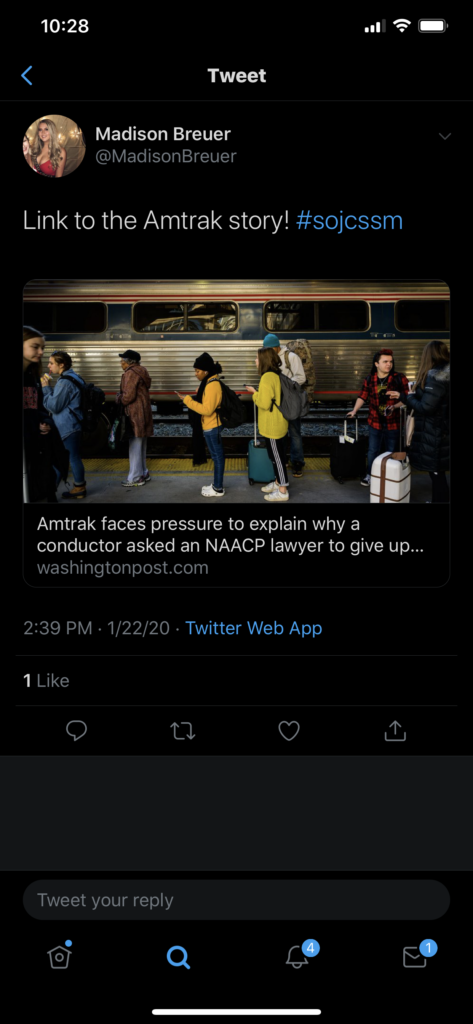
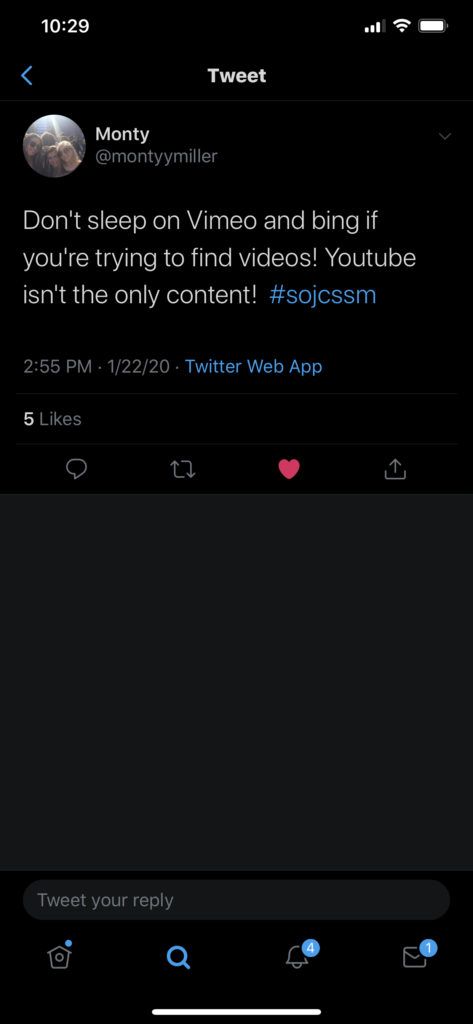
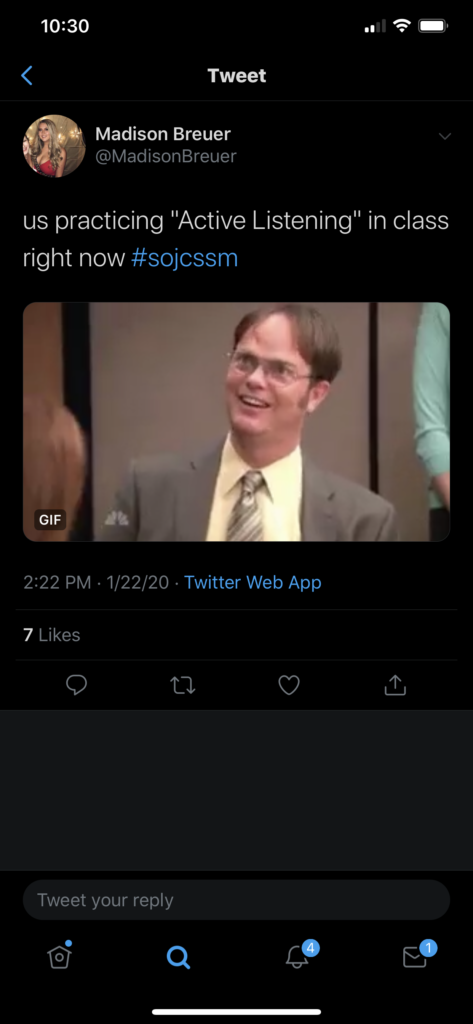
Twitter: @jamiie_dunn | @MadisonBreuer | @montyymiller | @benc00ke



